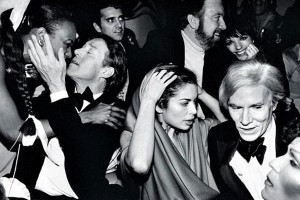“Please, someone, do the research and write a really in depth article on the nature of getting people in the door [of galleries] versus the likelihood that they buy something…”
–surlycurly (reader comment on Lucia Simek’s discussion of Design District Gallery Day in Dallas)
Short Answer
At high-end contemporary galleries, there isn’t a causal relationship between number of people through the door and artwork sales. Events like Design District Gallery Day are mostly about the artistic community that Simek mentioned because community is part of what is built, bought, and sold in an art market. In the long run, fostering this sense of community—and being a “scene-maker” at the center of it—can contribute to sales. However, I doubt there were many, if any, new red dots at the end of Design District Gallery Day. Rather, gallerists, artists, and collectors were stocking up on social and cultural capital for the future. The community was building the relationships, the general good will, the discourse, and the status that provide the grease for the art market to function.
Long Answer
Three key characteristics that shape the behavior of buyers in the contemporary art market in a gallery scene like Dallas. As I enumerate below, first, art is a luxury good, second, art collecting is a philanthropic practice, and third, art collecting is community building.
(1) Art is a luxury good
Contemporary art is a luxury good in the classic economic sense: demand increases more than proportionally as income rises. For example, if you’re making $30K a year, you buy one $500 photograph, if you’re making twice as much, you buy a $500 photograph and a $1,500 drawing, and if you’re making three times as much, you buy a small $4,500 painting and two $1,500 drawings. When your income increases, the amount you spend on art increases faster.
There is something else happening in this example, too. As your income rises, you are buying more artworks, yes, but you are also buying more expensive artworks. You could buy fifteen $500 photos for the same price as one small painting and two drawings, but now that you’re making $90K, the photographs don’t fulfill the role of luxury goods for you anymore. You switch to paintings and drawings. As with other luxury purchases, your art purchases are aspirational, status-building, identity-building, and even intoxicating.
Of course, I’m giving you a super simplified example, but you get the idea. We consume art kind of like we consume other luxury goods—wine, shoes, leisure travel, yachts, pick your poison. But there’s a couple of twists to this story…
(2) Art collecting is philanthropic practice
Especially in the case of contemporary art, the practice of collecting is also about supporting artists and ideas, participating in a community and a dialogue, making a positive social impact. The people buying art are the same people who are on the boards of nonprofit art spaces, who are giving art to museums, and who are funding non-collectible artist projects, curatorial research, and institutional operating budgets.
Some collectors support galleries in an almost philanthropic manner. They show up for every event. They buy from every show. They do it because they like the art, but they also do it because of the positive impact the gallery has on the local art community. In these cases, they look less like luxury consumers and more like philanthropists and impact investors.
(3) Art collecting is community building
Many art purchases are deeply embedded in relationships that extend outside the gallery walls. Artists, collectors, gallerists and curators run in the same social circles. We do business together, and we’re also friends and familiar acquaintances. Social obligation, generosity toward friends, an impulse to maintain a particular balance of status and power, or a desire to enter a particular social circle shapes how you buy art.
So, art sales aren’t a game of visitor numbers.
Impulse buys or casual purchases made by strangers are not the norm in a gallery. Art purchases represent large financial and emotional investments for their buyers. A buyer is purchasing an experience, a status, and an identity. She is philanthropically interested in supporting certain types of work that align with her ideas and ideals. She is embedded in a large community of artists, gallerists, other collectors, and so on, who are related in various ways to the objects available for purchase. Sure, a big party occasionally provides an occasion for a future collector to walk through the door. But let’s not kid ourselves, artists and gallerists have to work way harder than that to give us the whole package—that bit of transcendence we’re chasing through our consumption of art.



